If you read my post on how to use the Cariboo game for speech therapy, you’re probably ready to jump right in and start prepping cards to go with the game. But, you might be wondering, “How do I actually ORGANIZE all these cards?”
(Psst- there’s a free download for you at the end of this post you don’t want to miss!)
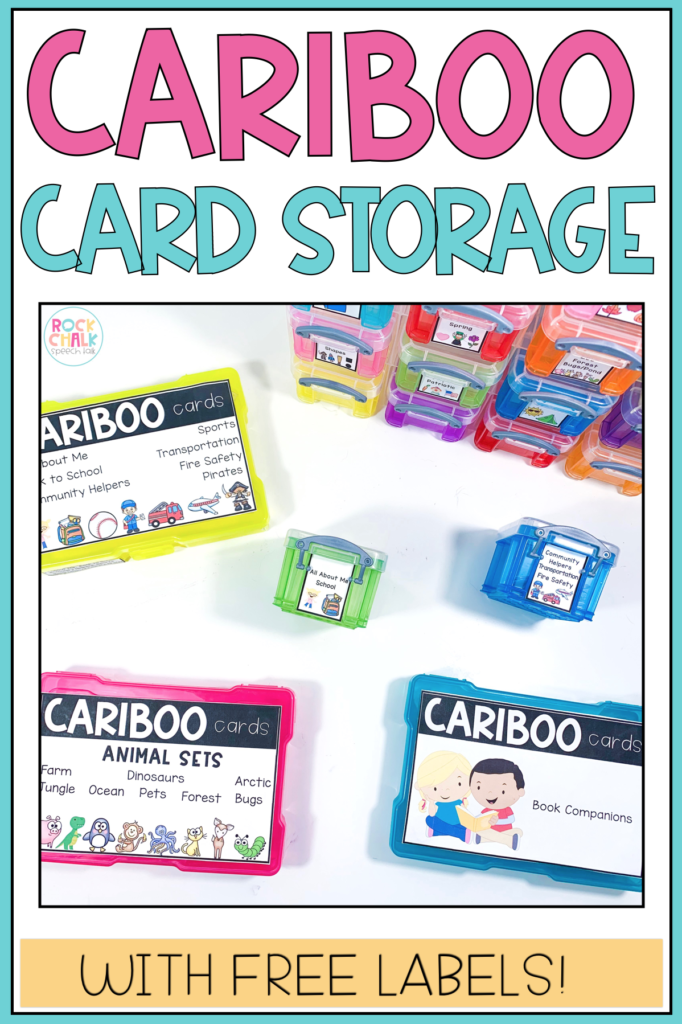
I’ve tried my share of organizational systems for these cards, so I’ll walk you through the pros and cons of each one, and which one I like the best!
1. Binder with velcro

These are old pictures of what I first started with.
I 3-hole-punched cardstock, added soft-side velcro to the cardstock, and added rough-side velcro to the backs of my laminated cards. I stored each set together in a binder that sat on my bookshelf. (Oh, and I put soft-side Velcro dots on my Cariboo game boxes, too)
Pros:
- I could flip through the binder pretty easily to find the set I needed.
- Velcro made it easy to switch cards in/out without having to slide each one in.
Cons:
- Bulkiness. While convenient, it was also bulky with all the velcro. Also, let’s be real- velcro is kind of a precious commodity (bc it’s pricey and you’re always running out!) and I used a ton of it to make this binder.
PRO TIP: IF you’re going to use Velcro on your Cariboo cards, instead of placing your “base” Velcro on the actual game boxes, put it on the original square cards that come with the game. Leave those cards on the boxes at all times, using them as your “base.” When you play, stick your SLP-specific cards on top of those base cards.
That way, if you do ever decide to change your mind, you’re not stuck with Velcro on your Cariboo game boxes. Because let me tell ya- it’s almost impossible to peel off! (#regrets)
2. 4×6 Photo boxes (you know, those colorful ones everyone has from Michael’s?)
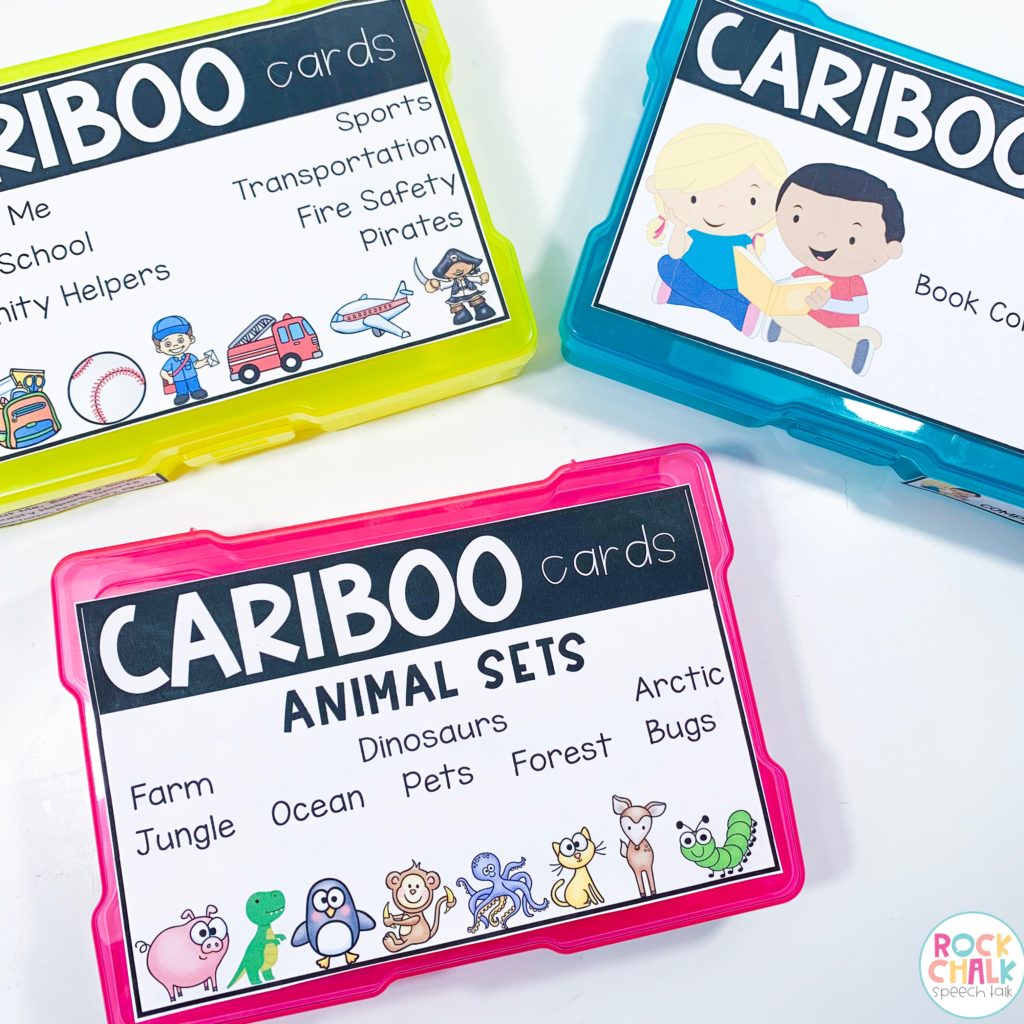
This was my second system. I used it when I still had Velcro on the backs of the cards, but this system also works really well using cards without Velcro.
WITHOUT VELCRO ON THE BACKS OF CARDS:
Pros:
- You can binder clip each set together, and keep several sets in one container.
- Easy for traveling therapists- a single box doesn’t take up much room in your bag!
Cons: None, really!
WITH VELCRO ON THE BACKS OF CARDS:
Pros:
- Less velcro than the first setup with the binder
- Quicker than the binder (a little bit.. because I could just toss cards back into the box rather than sticking each one back onto its own velcro dot)
Cons: No way to keep sets separate without them each having their own individual boxes (because the velcro makes it impossible to binder clip them together).
3. Mini boxes- “Really Useful Storage Boxes” from Michael’s
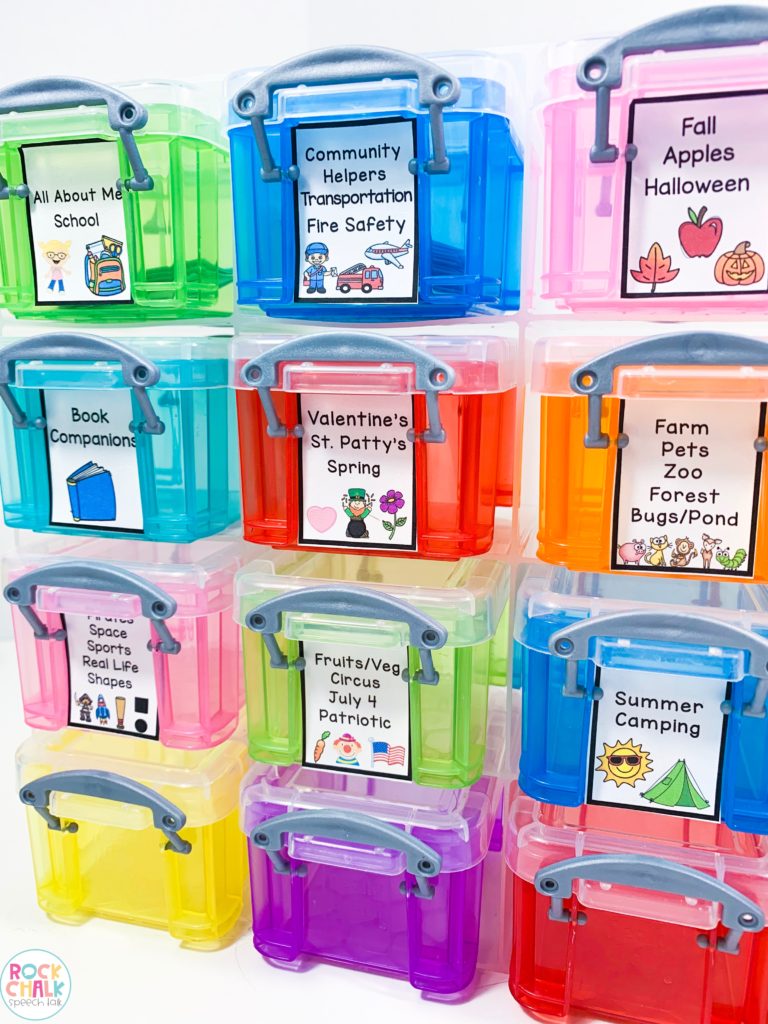
This is my current storage solution, and I really love it! I can fit 4-5 sets in one box, with each set clipped together.
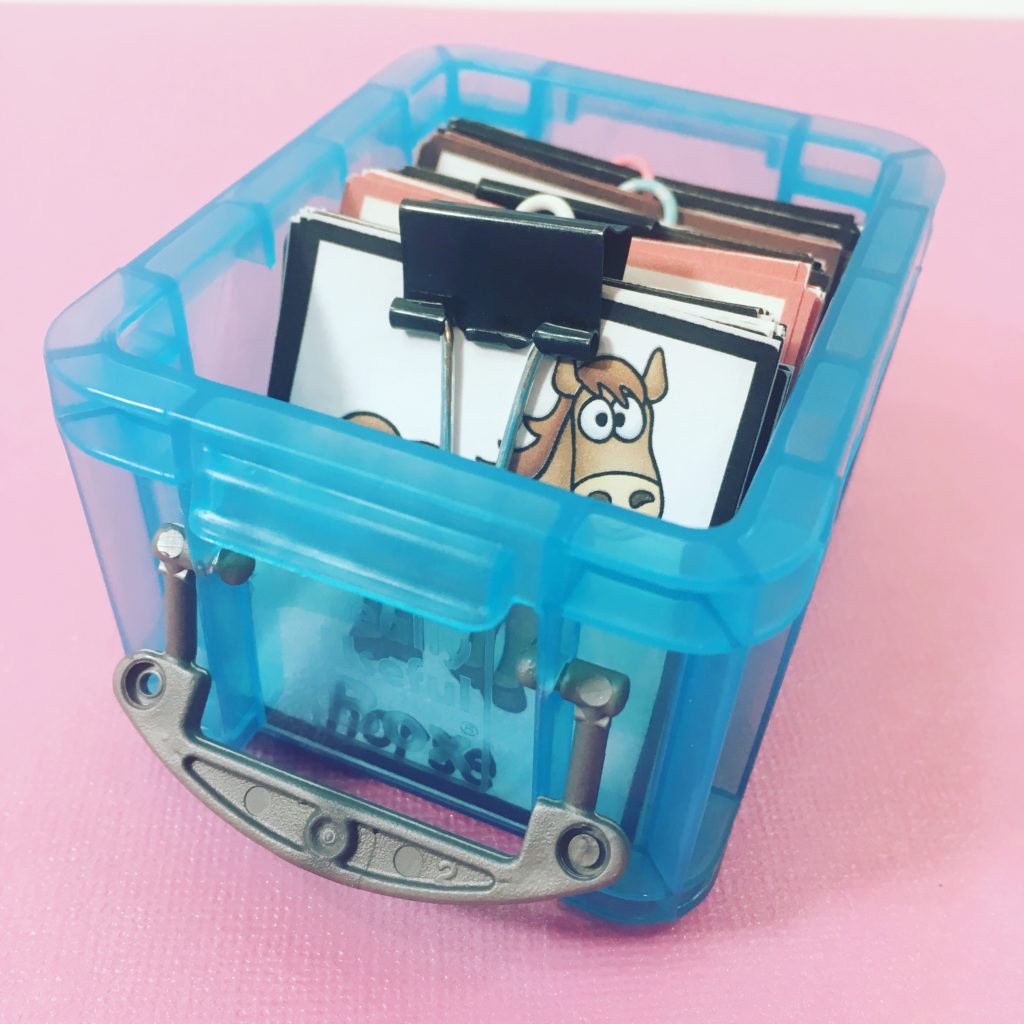
When I updated some of my Cariboo card sets earlier this year with new clip art and fonts, I re-printed/prepped them, this time without velcro (because my velcro version is now my backup game stored at home, and I have a non-velcroed game I use at work) and I like it a lot better! The storage is so much less bulky!
Pros:
- The whole container system itself is smaller than the 4×6 photo boxes + the case in its entirety, so it takes up less room
- Small box is easy to toss in your bag or to grab to run down the hall for therapy
Cons:
- Can’t fit as many sets in 1 of these small containers as you can in a 4×6 photo box.
Note: These frequently go 50% off, making them $15. I definitely wouldn’t spend full price!
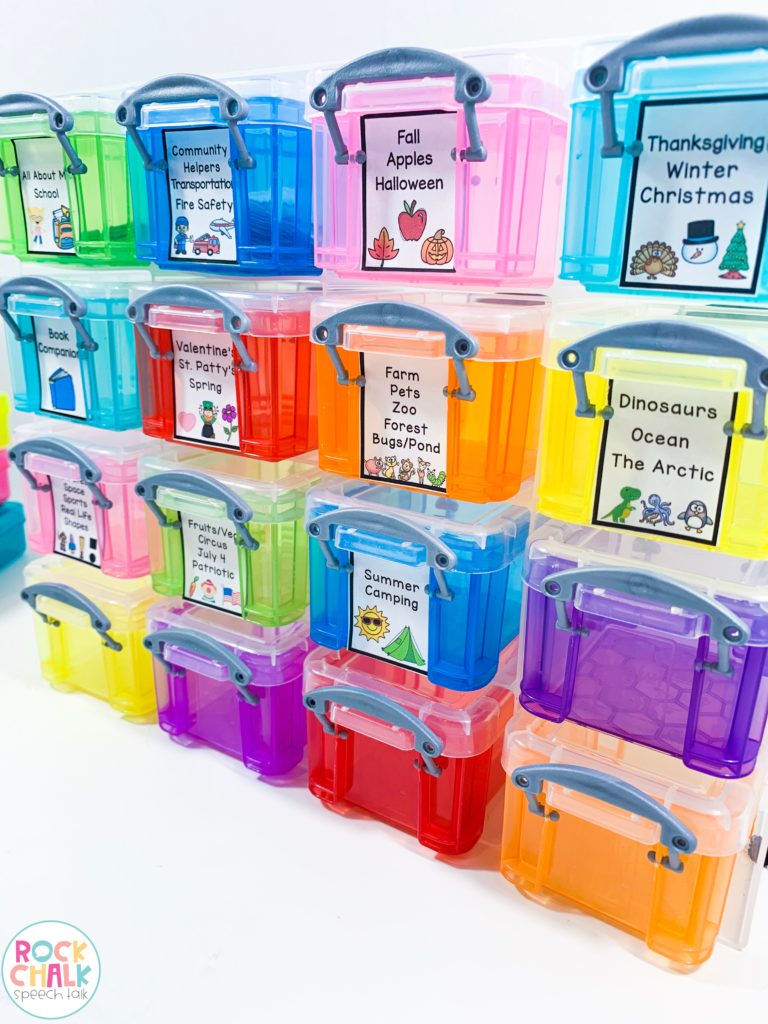
Personally, I prefer this over the 4×6 photo boxes for storage, just because I’m always short on the photo boxes for storing other larger materials like sensory bin manipulatives. But, I don’t think you can go wrong with either one!
—————
Okay, so now that you have some storage options for your Cariboo cards.. Are you ready to get organized?
I made printable labels for you, sized for each type of storage box I mentioned above, so you can quickly see which box(es) you need to grab for your sessions.
The 4×6 box labels include a small label for the front of the boxes, so you can still tell what’s what no matter how they’re stacked.
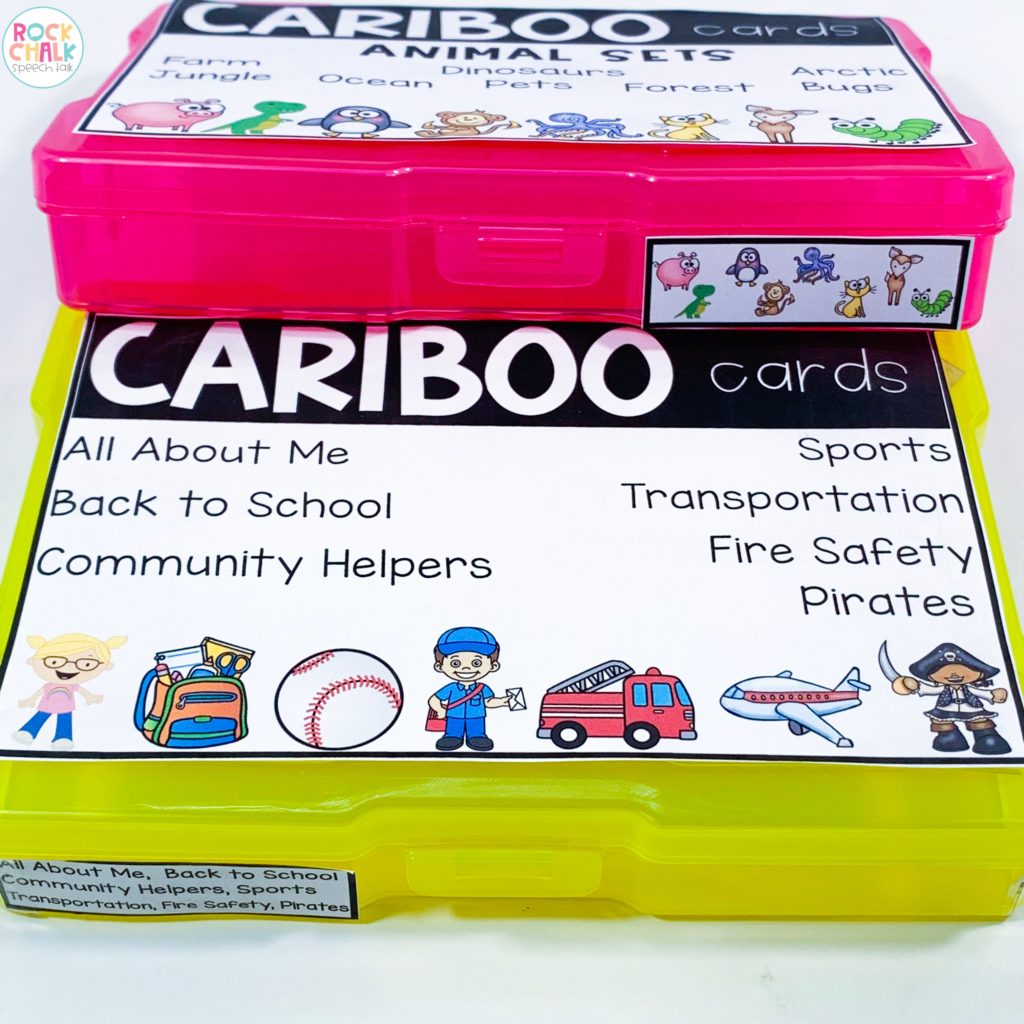
If you’re already an email subscriber, you can find these labels in the free resource library you have access to with your password. If you’re not on the list yet, get access via the form below!

I am having a difficult time printing the labels you created for your Caraboo cards. I just bought the complete set and the larger rainbow boxes and am so excited to find you made labels. Please help as I am getting an error message anyway I try to print the document. Thanks
HI! Just downloaded your template for the labels… and it won’t let me print them on dropbox. Should it be working or is it a glitch? Thank you
I Have figured it out!!! Thank you!! These labels are so cute for your bundles !!! 🙂 I have the same boxes as well.